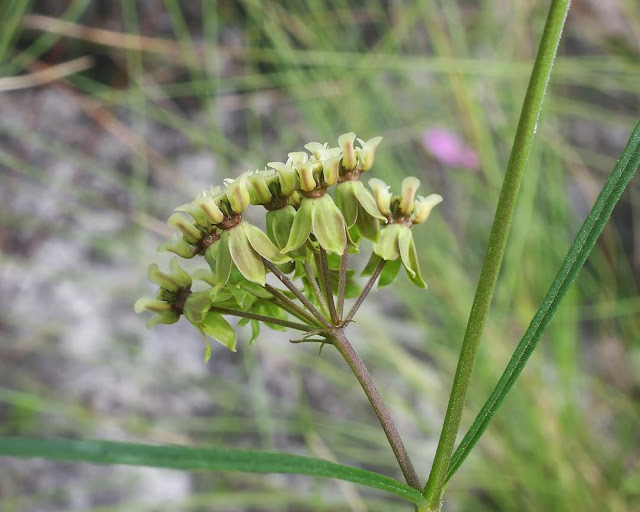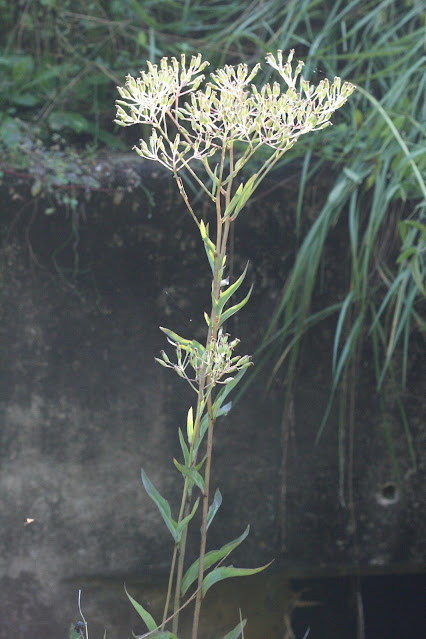\

Green comet milkweed (Asclepias viridiflora) is one of 22 milkweeds native to Florida. It is unique in appearance and easily recognized from the others. Found in most counties of north Florida, this species occurs in open well-drained sandy soils. A perennial, it dies back to the ground each winter and reemerges in the spring. Eventually, it reaches a mature height of about 2 feet by early summer. The stalks are solitary.
The leaves are variable in shape, but mostly lanceolate. They are opposite on the stems. The flowers are urn shaped and open only at the top. Up to 5 dozen of these green flowers occur in two-inch clusters in the upper leaf clusters. Pollinated flowers form long pointed pods about 4 inches long. Like many milkweeds, pollination is mostly accomplished by butterflies.
Like other members of this genus, green comet milkweed is a host to monarch and queen butterflies and like most other upland milkweeds, it is rarely, if ever, offered commercially by any of the native nurseries affiliated with FANN - the Florida Association of Native Nurseries. I have never attempted the propagation of this species, but I've found most of our native upland milkweeds difficult to maintain in a nursery or landscape. Although getting seeds to sprout is easy, keeping them in a pot for any length of time or getting seedlings to survive the transplanting to a landscape is difficult. That seems to be the problem of getting them into the trade despite the great interest in milkweeds.
The bottom three photos are used with permission by my friend Floyd Griffith.























